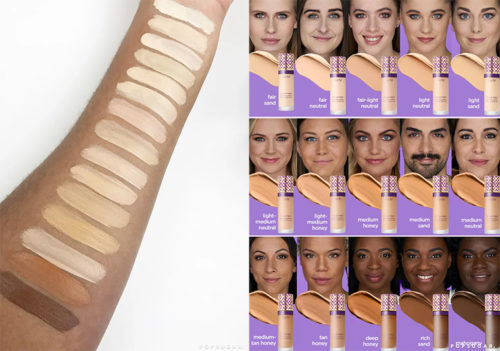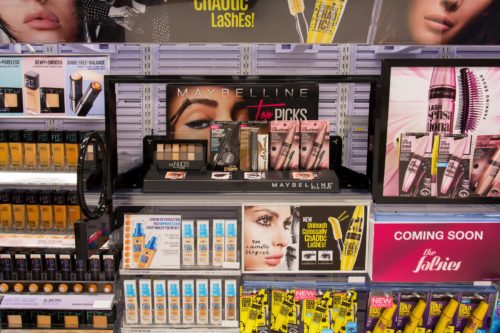There is an essential need for more diversity in the booming makeup industry.
The majority of makeup brands have a history of excluding women of color in their makeup lines. From drugstore brands to high-end luxury, makeup has a color problem. There are some makeup brands that are starting to realize this is an issue.
Women of color have had to struggle for years when it came time to finding their foundation shade. Makeup brands continue to put out the same few shades. There are a limited number of shades for women of color and only very few shades for women who have darker skin. The problem is that there are so many women for whom the makeup brand’s darkest shades just don’t work.
There are many beige, olive, and sand color shades which are for women of a lighter complexion. Women of color come in many different complexions but when you walk into a drugstore or even a high-end makeup store such as MAC, Sephora, or ULTA you would conclude that women of color only come in a few light hues of chestnut, mocha, and caramel.

Source: Temptalia
I went to in to stores to interview employees and customers. Most of the people who agreed to answer questions were women of color. It seemed to be that others did not have much of an interest in discussing the topic at all.
Dominique C., an employee at Sephora, stated,
“When women who look like me come into our store, they always sit down and test so many colors and brands on their skin to see if the color will match perfectly or close enough to their skin tone. It usually takes them, about 45 minutes to an hour, with the help of employees, to realize what color fits them best. A lot of women who are of lighter skin tones come and go easily, barely spending 20 minutes in our store. When we get shipments of foundation colors there are always way more boxes full of colors for lighter skin tones than there is of the boxes full of colors for darker skin tones. The irony in it is that the darker skin tones are always sold out.”
A few other employees at the store chimed in that ever since brands like Fenty Beauty and Lancôme started lines that provide colors for women of darker skin tones that is what they typically recommend to shoppers. Women of color are more likely to enter stores looking for these brands because they have a better chance of finding the right fit for their skin tone.

Source: CVS Pharmacy
I went from Sephora to the local CVS Pharmacy to find out about the brands and the color ranges there. I found a customer who uses drugstore makeup brands for her everyday “basic look.” She says, “I use Maybelline foundation or Revlon. Those lines have extended color ranges even though they are drugstore brands. One thing I did learn as someone who does makeup, even though these lines do not have my specific color, but I am able to mix two colors to get my desired shade.”
Makeup brands such as YSL, Tarte, Make-up Forever, Almay, and many others have been criticized for not making dark enough shades. The question women of color want to know is “Why?”
Women of color spend 7.5 billion dollars on makeup every single year. It is appalling that makeup brands decide not to create darker foundation shades for this market. The makeup industry is worth billions and makeup brands could clearly make even more money by meeting this demand. Profits do not appear to be the object of these brands since they decided to be exclusive. Could this be about the underlying issue of racism? By including a few shades for women of color, brands try to cover up the fact that racism is behind the lack of diversity in their lines, but it is obvious to customers, employees, and those who do not even use makeup.
There is hope for the future. Customers, employees, and women of color know that their time is coming. With brands like Fenty by Rihanna, Lancome, Black Opal, and many others offering new shades, inclusion is not as far away as it may seem. Women of color are already a large part of the makeup industry. Once “the ball gets rolling,” it will not stop. Watching how women of color react to makeup brands including colors for them will be joyous and interesting to see.







